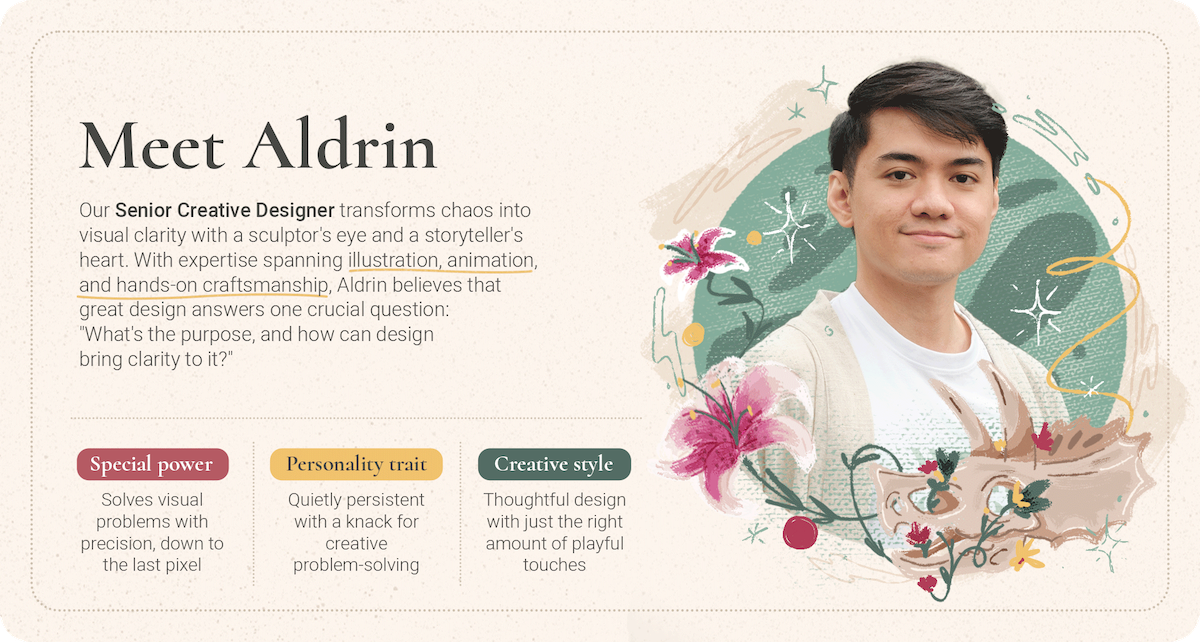
Hi readers! Elwyn here. 👋
If you’re like me, networking doesn’t come naturally. Stepping into a room full of people—or even an online group—can stir up all kinds of imposter syndrome.
But here’s the kicker: the way people make purchasing decisions is changing, and we need to keep up as marketers.
84% of content sharing now happens through private channels (or also known as dark socials) like WhatsApp, Slack, and email.
These “dark social” spaces are where real conversations and decisions are happening, hidden from traditional marketing metrics. Sales decisions today are shaped by these private, trusted exchanges.
Why does this matter? Because the sales pitch is just one piece of a much bigger puzzle. Before and after your pitch, prospects are:
- Seeking peer recommendations in private groups.
- Having internal team discussions you aren’t part of.
- Consulting external advisors they trust.
- Validating choices through hidden online communities.
I go into more detail on this multi-layered buyer journey in an article I wrote previously on fixing the marketing funnel. But the key takeaway is that these conversations are happening behind the scenes, making it harder to engage directly through traditional methods.
That’s why tapping into online communities—and embracing the dark social—is more important than ever. They offer a way to be part of the conversation without the pressure of face-to-face networking.
So, how did I navigate this new landscape?
Hear me out.
How to find the right online communities
Finding the right communities can be tricky, especially when you’re not sure where to start. But it’s all about being strategic—choosing the spaces where your target audience already spends time.


Sources: Upstack Studio | Marketing Hoy | On-demand Consumer Research GWI |Amity
For many marketers, LinkedIn groups are a solid starting point. You’ll also find niche forums on Slack and Reddit, or even industry-specific platforms that cater to particular sectors. If you’re in APAC, it might mean focusing on groups that discuss content marketing, digital transformation, or regional challenges unique to this market.
Here are some communities to get you started!
- LinkedIn Content Marketing Institute Group – A vibrant space for content marketers to share ideas and insights.
- Slack Group: APAC Marketers– Real-time marketing advice in its numerous channels dedicated to everything from SEO to social media marketing.
- Reddit: r/marketing – A highly active forum for discussing global and regional marketing trends.
- Whatsapp: Brand Builder Talents Networking and Collaboration Community – A group for marketing professionals in the APAC region to share strategies and insights.
How can you be a green flag in a community?
Showing up in a community is one thing, but being a valuable and trusted member is where the real impact happens. Whether you’re introverted like me or just starting out, these practices will help you engage meaningfully and make a lasting impression:
- Listen before you speak: Start by observing. It’s easy to feel the pressure to jump in, but take the time to understand the discussions, the challenges people are facing, and what’s being asked. I like to set aside 10-15 minutes a day just to read through threads or posts—no pressure to comment, just absorbing the vibe.
- Offer value, not sales pitches: When you do contribute, make sure it’s helpful and adds value. Share insights, resources, or advice, but avoid self-promotion. I often drop a link to a relevant article or share personal experiences if they align with the conversation—always with the goal of helping, not selling.
- Engage consistently: Consistency is key. Communities thrive on regular participation, not just one-off posts. I aim to engage with meaningful contributions at least once or twice a week. Setting small, achievable goals for engagement helps build trust and presence over time.
- Encourage diversity of opinions: A good community isn’t an echo chamber. Foster richer discussions by welcoming and acknowledging different viewpoints. I find that asking open-ended questions encourages others to share, leading to deeper conversations.
- Respect moderation and quality control: Upholding the group’s standards is crucial for maintaining a healthy community. Make sure your contributions align with the group’s guidelines. Personally, I always respect the moderators’ role and ensure my comments stay on track.
- Find your personal fit: Communities should align with your goals, both personal and professional. If you’re learning and contributing, you’re in the right place. I’ve found value in groups like the Content Marketing Institute and the Whatsapp Brand Builder Talents Networking and Collaboration Community, where I regularly contribute.
By showing up consistently, offering real value, and engaging thoughtfully, you can become a trusted member in any community—without feeling like you’re jumping into the spotlight.
For introverts, these practices help create meaningful connections without overwhelming yourself.
How to turn online communities into powerful marketing touchpoints
Once you’ve established yourself as a trusted member of a community, you can tap into several marketing opportunities without being overly promotional. Here’s how you can make the most of these spaces:
- Share educational content: When you have content that genuinely helps the community—such as articles, guides, or case studies—don’t hesitate to share it. Make sure it’s tailored to the needs of the group and presented in a non-salesy way. For example, if someone asks a question that your blog post answers, share the link with a short, helpful comment.
- Ask for feedback: Communities are great for gathering insights. Use the group to ask for feedback on new ideas, product features, or even content you’re working on. It shows you value the community’s input and helps you refine your offerings based on real-world perspectives.
- Participate in expert discussions: A great way to engage deeper in a community is by participating in expert discussions. LinkedIn’s Expert Sharing platform is an ideal place to start. By joining relevant conversations or initiating your own, you can share your knowledge, discuss trends, and answer questions posed by the community. This builds credibility while keeping the focus on adding value rather than self-promotion. As I’ve experienced through my own LinkedIn contributions, it’s a subtle but effective way to position yourself as a thought leader.
- Support others: Engage with other members by supporting their content. Comment on their posts, share insights, and offer suggestions when appropriate. This builds goodwill and strengthens relationships within the community, making them more likely to engage with your content in return.
The beauty of online communities is that they don’t demand constant attention. You can contribute at your own pace, gradually build relationships, and stay connected to meaningful conversations.
By being intentional and offering value, these communities become valuable touchpoints for nurturing relationships, gathering insights, and subtly driving brand awareness.
Why wait? Join a conversation now!
For marketers who find traditional networking daunting, these platforms provide a welcome alternative—spaces where we can listen, learn, and contribute value without the pressure of in-person interactions.
For those of us grappling with imposter syndrome or the fear of putting ourselves out there, online communities offer a more accessible way to build connections, share expertise, and grow professionally at our own pace. By embracing these communities, we tap into the real conversations happening behind the scenes—the ones shaping decisions and driving opportunities.
So, if you haven’t already, start exploring. There’s a world of conversation waiting for you.
Let’s raise the bar of content marketing in Southeast Asia
We hope you enjoy Rise and find this newsletter helpful. (Read our past editions here.)
And if you do, why not share it with a friend?
Thanks for reading!
![]()
Elwyn
Design by Jan



